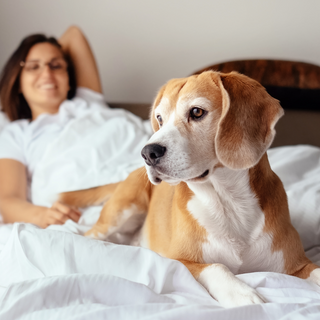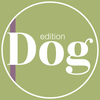How Smarter Materials Support Improved Homes for Dogs
Dogs bring joy, comfort, and companionship into our lives, but they also bring mud, moisture, and mess! From food bowls to dog beds, collars to grooming tools, the products we use every day are constantly exposed to the realities of dog life. While most owners focus on visible cleanliness, there’s a growing awareness of what we can’t see. How materials themselves behave, plays an important role in creating an improved environment for our dogs.
In recent years, scientists and product designers have been working together to rethink what “clean” really means in the context of dog products. Rather than relying on constant washing or harsh cleaning chemicals, they’re exploring how smarter materials can help to reduce odours, ensure products stay fresher for longer.

The Hidden Life of Dog Products
Bowls collect moisture, toys end up in the garden, and bedding absorbs body oils and odours. These conditions create the perfect habitat for microbes to thrive, particularly in porous or absorbent materials. Over time, this can lead to unwanted smells, staining, and even faster wear and tear.
Every surface, from plastic to fabric, has its own ‘micro-landscape.’ Tiny scratches, fibres, and pores hold onto moisture and organic matter, providing the ideal environment for bacterial growth. It’s not something owners can prevent entirely, but it can be managed through improved product design and smarter material choices.
Innovation in Material Science
Across many industries, there’s a shift toward designing materials that actively stay cleaner for longer. In the dog product sector, this means working with polymers, textiles, and coatings that are less likely to absorb moisture or retain odours. Some are developed to make cleaning easier, others to slow the rate at which microbes can multiply.
These innovations are powerful. By altering surface properties at the molecular level, scientists can influence how bacteria interact with a material, or whether they can attach to a material at all. Similarly, advanced coatings can create barriers that prevent dirt and oils from bonding, complimenting or reducing the need for frequent washing.
For dog owners, that means products that remain fresher between cleans. For manufacturers, it means longer-lasting goods that maintain their appearance and performance over time.

Sustainability Through Longevity
Sustainability isn’t only about recycled materials, it’s also about making products that last. Every time a dog bed or water bowl is replaced, new materials must be sourced, manufactured, and transported. Designing products that resist odour, staining, and degradation extends their usable life and reduces overall waste.
Cleaner-by-design materials also encourage more mindful maintenance. When surfaces stay fresher, owners can wash less frequently, saving energy and water while keeping their dogs comfortable. It’s a small shift that aligns with a broader movement toward sustainable dog ownership, where thoughtful design supports both wellbeing and the planet.
Collaboration Between Science and Industry
Behind these advances is a growing partnership between material scientists and dog product designers. Companies that supply additives, coatings, and polymer technologies are working directly with manufacturers to tailor solutions for specific needs, from chew-resistant toys to odour-controlled fabrics.
These collaborations aren’t just about solving immediate hygiene challenges. They’re helping shape a new generation of dog products that balance cleanliness, comfort, and environmental responsibility. Each small innovation, whether it’s a coating that repels moisture or a polymer that resists microbial degradation, contributes to a more sustainable industry as a whole.

Looking Ahead
As innovation in materials continues, the future of dog product design looks increasingly intelligent. We can expect to see greater use of bio-based materials, self-cleaning surfaces, and circular manufacturing systems that allow products to be repurposed or recycled at the end of their life.
At the heart of this evolution is a simple idea: the best products don’t just serve dogs, they serve people and the planet too. By embedding performance into materials themselves, rather than relying on constant cleaning or replacement, the industry can deliver cleaner, longer-lasting, and more responsible solutions.
Smarter materials may not be the first thing dog owners think about when choosing a product, but they make a world of difference. Whether it’s a dog bowl that lasts longer, a bed that stays fresh, or a toy that resists odour, innovation beneath the surface is quietly shaping a cleaner home for dogs everywhere.

Read More Articles
Explore more stories about canine wellbeing, science, and innovation. Visit the Paws the Word blog.
- Choosing a selection results in a full page refresh.


